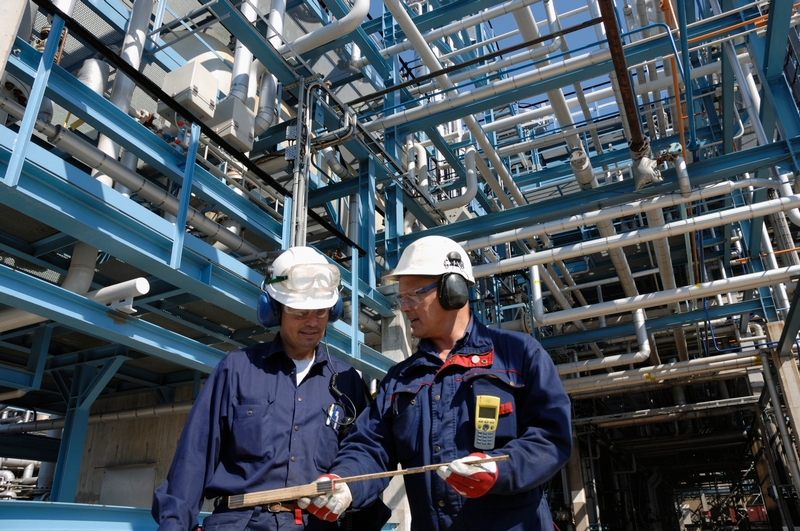Session Chair and Co-Chairs:
-
Mustafa Al-Sabawi, Esso - Sarnia Technology Applications & Research
-
Ian Glasgow, International Alliance Group
-
Kirtan Trivedi, ExxonMobil
Session Description:
The development of technology for the advancement of process industries is an area researcher and engineers work in to continuously improve society. However, these developments becoming commercial realities are not always easy to achieve. Multiple items can make what appears to be a good idea, something that in the end is not commercially viable. Some of the economic items that are used to determine if these advances are to become commercial realities include the CAPEX and OPEX of the process unit, market availability of feedstocks and/or products, process safety, environmental constrains, and/or availability of project funding.
This session looks to discuss some of these issues, and how researchers and engineers can identify ways to mitigate these risks so that new technology and developmental ideas can become commercially viable opportunities.
Schedule:
| TIME | PRESENTATION | SPEAKER |
| 1:00pm | Techno Economics - Crying Needs |
John Super, Cobroko Solutions |
| 1:30pm |
Commercialization of the DSU™ Process – One Miracle at a Time! |
Neil Camarta, Field Upgrading |
Abstracts:
Techno Economics - Crying Needs
John Super, Cobroko Solutions
What is missing in the Techno Economics (T-E) approach in your organization? Are you hiring engineers that have the knowledge, skills, and experience in T-E so people and money are focused on work that may be commercialized? This is not a new dilemma.
In 1958 Cecil Chilton wrote a paper at the 50th AIChE anniversary titled “Economic Evaluation – Crying Needs”, and those needs were meet. In 1989 AIChE had the symposium “Persistent Problems in Investment Appraisal”. These problems continued, lost importance, or became worse. We have renamed the area Techno Economics (T-E) and should provide engineers the tools and resources to help make quality decisions. A significant change has been the use of process simulators to perform T-E calculations. Another is the team approach for developing technology. In the USA we graduate a total of 80,000 BS engineers in all disciplines (ChE about 5,000!) and 150,000-200,000 MBA each year, resulting in MBA’s doing more of the analysis in fuels, refining and chemicals. ABET has an implied reference to T-E in its Program Criteria, in the comment: “broad education necessary to understand the impact of engineering solutions in a global and societal context”. To receive P.Eng. Certificate of Authorization, there is no mention at all of T-E analysis.
For Chemical Engineers, today what is missing in small to medium-sized organizations are an understanding of the principles of evaluations, the basics of deciding between alternatives and developing quality conceptual CAPEX and OPEX estimates early in a program. Our growth and new idea development are in the biofuels, biotech overall and the life science spaces, often in the small and medium-sized organizations, sometimes in the larger organizations. So that new ideas reach commercial reality, some ways to fill this gap:
- Process Development Division (PDD) identify and sponsor experts to speak on the topic at local AIChE section meetings.
- Develop up-to-date tools for conceptual estimating, many are 50 years old or older.
- Write more about the importance of T-E early in innovation programs to improve chances of commercial success.
- Improve the knowledge and skills that chemical engineers have when receiving the undergraduate degree. In 1988 James R Couper discussed teaching problems and James B Weaver about issues with text books. PDD can lobby ABET to include T-E in the Program Criteria and Survey chemical engineering programs for instruction in T-E and texts used. Use data from the survey to reinforce a lobbying effort at ABET and AIChE with PDD leadership support. Focus another lobbying effort on P.Eng Certification.
We need to be sure that ChE understand T-E well and contribute as individuals and team members to focus and guide work and money on programs that are more likely to be commercially successful.
Commercialization of the DSU™ Process – One Miracle at a Time!
Neil Camarta, Field Upgrading
In the De-Sulphurization & Upgrading (DSU™) process, molten sodium is mixed with high sulphur refinery bottoms to reduce sulphur levels down to less than 0.5% -- the new specification for marine fuels post-2020. Sodium sulphide is formed in the DSU™ reactor and is separated from the product oil by centrifuge. Sodium is regenerated from the sodium sulphide using electrolysis. Field Upgrading have moved from lab-scale (batch) to pilot-scale (continuous) and are now launching into FEED for the Clean Seas™ Demonstration Plant. The scale-up to from lab to pilot plant was successful – but not easy.
In this presentation, the technical and financial challenges encountered going from lab-scale to pilot-scale will be addressed, as well as how those challenges were overcome. Some of the lessons learned from those challenges will be shared, as well as how the lessons were used to facilitate the transition from pilot-scale to demonstration-scale. Finally, key risks that have been identified in the demonstration plant and the plan on how to mitigate these risks will be presented.

